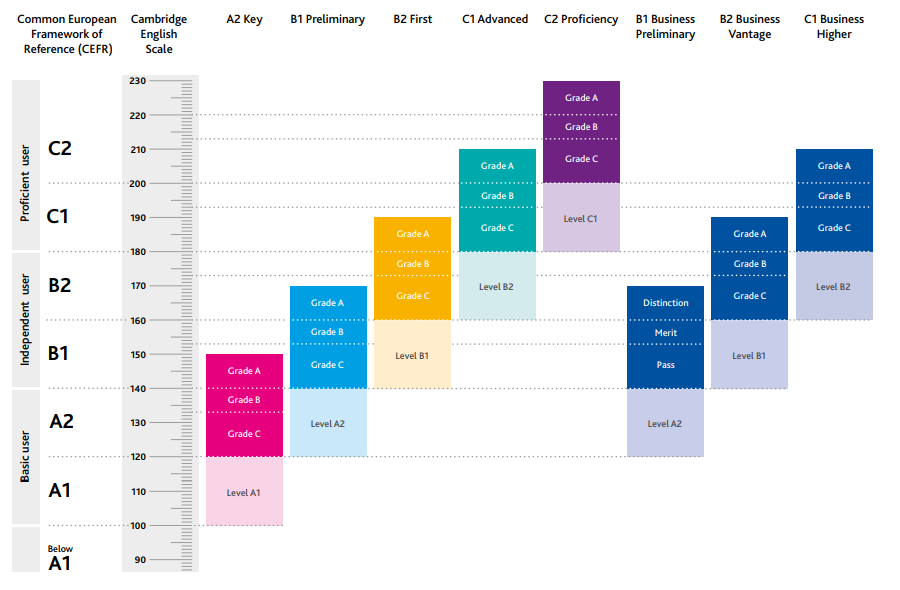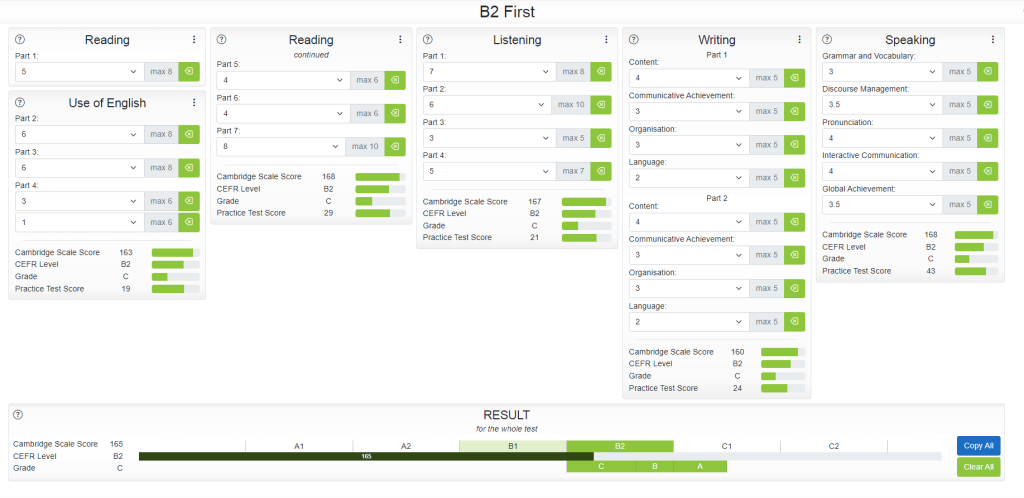Have you ever wondered how what the Cambridge English Scale is or how your score on a Cambridge exam converts to this mysterious scale? Cambridge actually do quite a good job of trying to explain what it is and how it applies to their different exams. There’s a nice 9-page pdf that they have put together here. It doesn’t ever explain why the Cambridge English Scale doesn’t start at 0, or why it’s practically impossible to score less than 82. It also doesn’t go into detail about why certain marks are worth more than others, but it’s ok to let them have their own little mysteries.
It can still be confusing when you want to convert a practice Cambridge exam to a simple pass or fail. However, with the help of a fantastic little web app called Cambridge Score, you no longer need to have a fancy spreadsheet or extreme calculator skills. This app will do everything for you!

About the Cambridge English Scale
I always like to imagine a group of dusty old academics sitting in a dusty old room pouring over dusty old books making decisions about how to calculate scores. In reality, there are probably computers involved. Regardless, Cambridge have developed their Cambridge English Scale with logic; all scores across all Cambridge exams can be mapped to the same scale. And that scale is mapped to the Common European Framework of Reference (CEFR).

This helps us to see how different exams overlap. This is later reflected in your final results where, for example, you can pass the B2 First with a C1 level if you score above 180. Personally, I feel this has its faults, especially with lower levels potentially granting a CEFR level way beyond the scope of what’s tested in the exam. But it must be pretty nice to be the recipient of that mark and knowing you’ve passed with flying colours.
Obviously, what you really want is to pass the exam. What would traditionally be called a pass is any mark in bands A, B or C. If you score below band C, it’s a failing mark. Cambridge like to say you got the lower level rather than use the word fail, but if you go into a B1 exam and leave with an A2 level, that’s a fail, sorry.
So now you know what the results mean, how do you turn your practice exam marks into a score on this fancy, colourful scale?
Cambridge Score
Luckily, someone much brighter than me has done the work for us with a lovely little web app called Cambridge Score (www.cambridgescore.com). This can be used on a browser or saved to your mobile device for ease of reuse.
It’s super simple to use. Just plug in your mark for each activity and it will spit out your results on the other side. It then tells you where you are on the Cambridge English Scale for each part of the exam, so even if you haven’t done every part, it’s still useful. Here’s a sample I did with a B2 First exam.

You can then copy a text version of the results to copy into a document or spreadsheet. Or you could take a screenshot and save it for your records. Always make sure to save it so you can compare your results over different practice tests and figure out your weaknesses.
Thank you to Andrei Milto and Katerina Zaritskaya for creating such a useful, simple and ad-free tool!

